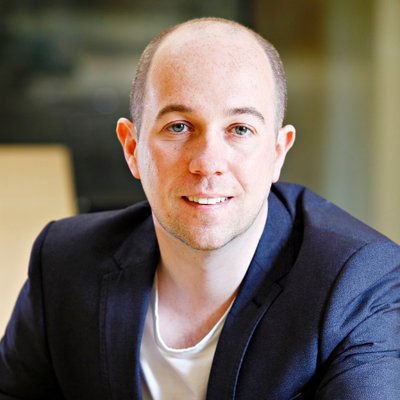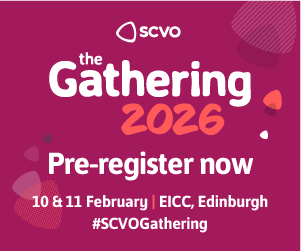A new partnership will “kickstart a revolution in stroke care”
A new charity partnership is aiming to create world-leading stroke care in Scotland.
Today, on World Stroke Day (Friday 29 October), Chest Heart and Stroke Scotland is calling for people to support a pioneering new partnership it says will “kickstart a revolution in stroke care”.
The charity and academics at the University of Strathclyde’s world leading Department of Biomedical Engineering are working together to integrate cutting-edge research in areas like robotics and computer gaming technology with CHSS’s Hospital to Home services.
The partnership is in its first phase of development. It will, over the next twelve months, integrate the work of engineers at Strathclyde and Chest Heart and Stroke Scotland’s Hospital to Home stroke services providing opportunities to take part in cutting edge recovery research and transform wraparound recovery support.
CHSS has set up a Stroke Care Revolution Fund to help fund the venture. They are looking to initially raise £160,000 to support the work of the centre and help 450 stroke survivors access the services through the partnership over the next twelve months.
In the first phase, the work of the partnership is open to people in the West of Scotland. Then, using the insight generated from stroke survivors going through the centre, the technology developed and programmes generated will then be made available in community settings across the country.
The first cohort of stroke survivors are already going through the programme and it is hoped that, through fundraising, the numbers will increase significantly over the next year. Some of the work at the centre uses artificial intelligence and machine learned methods used in computer gaming to produce tailored exercise programs for stroke survivors that encourage and support people in their own rehabilitation.
CHSS’ Jane-Claire Judson said: “Every day in Scotland 25 people’s lives are changed forever by stroke. In an instant, the things we all take for granted can be taken away like the ability to walk or talk.
“Rehabilitation is a lifeline that helps stroke survivors get their lives back. But cutting-edge rehabilitation technology and support is out of reach of most people in Scotland. This partnership will change that. It will kick start a revolution in stroke care in Scotland that will transform care for survivors and reduce pressures on our NHS.
“This is the future of stroke care and it is being led right here in Scotland. But we need people’s support to make it a reality. That’s why we’re calling for everyone to get behind this initiative and donate what they can to our “Stroke Care Revolution Fund” on World Stroke Day.”
Dr Andy Kerr, biomedical engineering at University of Strathclyde, said: “We are delighted to have Chest Heart and Stroke Scotland as a partner in our bid to revolutionise rehabilitation.
“Our determination is to develop technology that not only helps recovery but can also be used, easily, at home and in the local community, for example leisure centres. We consider this to be a key factor in improving access to rehabilitation technology.
“Our pilot has gone very well at the Sir Jules Thorn Centre for Co-creation of Rehabilitation technology, and we are well placed, with the support of CHSS, to scale up our efforts in the new year.”
Linda Hanlin was 54 when she suffered a stroke in January 2014. She has mobility issues on her left side and has participated in research trials to improve her movement.
Left with mobility issues on her left-hand side after a stroke, she has been keen to try anything that might improve her movement.
The 62-year-old, who lives in Kilmarnock, went through a lot of physiotherapy after the stroke in January 2014. But, almost eight years on, she still has trouble gripping with her left hand and has to walk with a stick.
In 2015, Linda took part in a research trial to see whether vagus nerve stimulation (VNS) could help improve the range of motion in her fingers. That trial saw an electronic device fitted in her chest and wired to her neck, stimulating signals from her brain to her hand.
Now Linda, who is a Kindness Volunteer with Chest Heart and Stroke Scotland and a member of the peer support group, Kilmarnock Young Stroke Group, is one of the first to use the pioneering stroke rehabilitation unit at the University of Strathclyde.
Twice a week since the start of September, the retired mum of two grown-up children has been going through her paces in a series of technological tests and exercises designed to retrain her limbs.
She said: “After I had my stroke and had gone through lots of rehab, my arm and leg had improved a lot. But last December I fell and broke my left ankle. Now I have a pin in the ankle and while I was recovering, I was totally immobile until about April.
“I felt all the good work I’d done on my left side had been lost. So going to the rehab unit was a good opportunity to build that muscle up again. I also wanted to work on my shoulder, which has been very sore.
“For my hand, I want to work on the feeling and sense of holding something. The first exercise they gave me I didn’t find beneficial, so I tried something else. That’s the beauty of this. It’s about finding what works for each person.
“My balance isn’t great, and I walk with a stick. I’ve been using the treadmill with a harness that shows you how you are working and encourages you to use your feet more evenly. My balance has definitely improved by using the treadmill.”
Linda says the two-hour sessions – 90 minutes spent doing the various exercises with time to rest in between – fly past. She’d love to have more of them as she sees her mobility and movement improve.
She said: “I didn’t feel in control of my walking when I first went on the treadmill, and I couldn’t walk on it. Then I thought, no, big girl’s pants on, just do it!
“I love the sessions, even though they go so quickly. I think the long-term plan is that this unit will act like a drop-in gym for those who need it, which would be fantastic. And if something like this could be available across the country, it would be even better. It would be a shame for people to miss out because of their postcode.”







